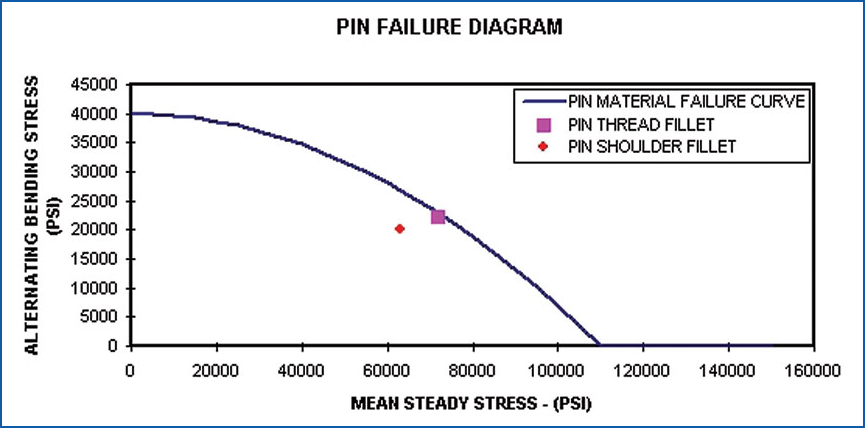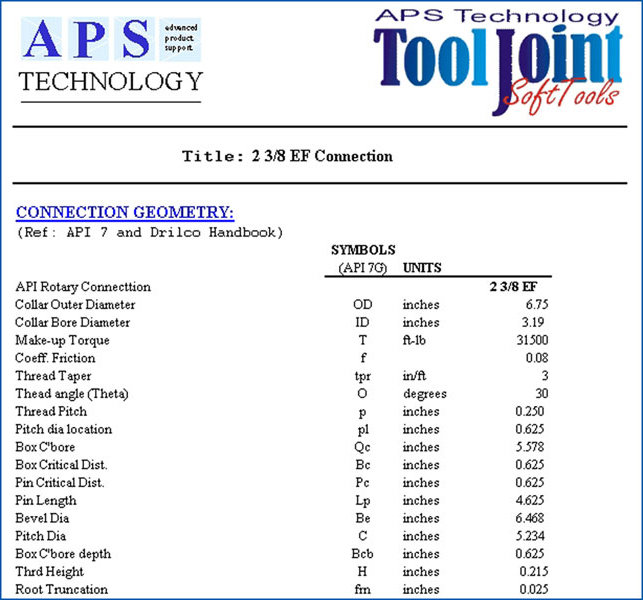ToolJointTM Software-based Consultation Service for Sizing & Evaluating API & Custom Rotary Connections
APS's ToolJoint™ program is designed as a "quick look" tool for sizing and evaluating API and custom rotary connections for downhole service. Connection problems are still a major cause of drill string failures. Connection failures and washouts result in expensive rig downtime, while thread galling causes the "laying down" of equipment prematurely. The benefit of this program is that it quickly analyzes different connections and loads. Currently written as a Microsoft Excel add-in, ToolJoint is only available through APS consulting services.

Analysis
While rotary connections are simple in structure, connection-working loads are more complex due to make-up and downhole operating conditions. ToolJoint provides a more detailed analysis than presented in the API 7G Standards and analyzes the following connection operating conditions:
- Maximum rotary build rate capability
- Maximum sliding build rate capability
- Build rate that begins to open the box and pin faces
The program analyzes the working stresses at four connection locations:
- Pin thread fillet
- Pin shoulder fillet
- Box thread fillet
- Box bore back
The stress at each of these locations is compared to the material properties. Connections with different pin and box materials can be analyzed. The connection fatigue capability is based on the Gerber failure criteria. The maximum sliding build rate is based on the yield strength of the material as well as the ability of the connection to resist opening at the faces.
For more detailed analyses, APS's FEA consulting services are also available.


